Why Is My Dog Losing Hair On His Tail? [Solutions]
You’ve probably spent countless hours admiring your dog’s beautiful coat, so noticing patches of missing hair on his tail can be both alarming and puzzling.
Why is your furry friend losing that hallmark feature? Is it just a harmless phase, or is it a symptom of an underlying issue that requires immediate attention?
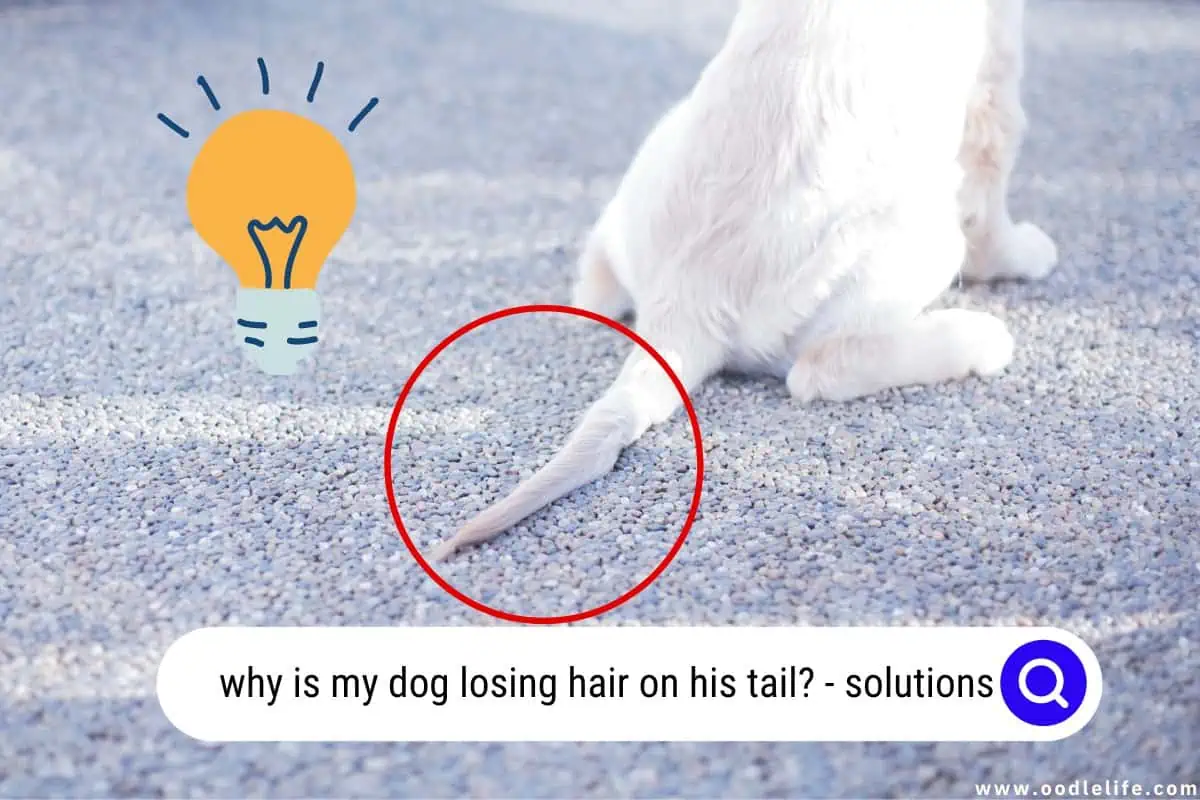
In this article, we’ll dig deep into the reasons behind this mysterious condition and offer expert insights and solutions to get your dog’s tail wagging—and looking—its best again.
Causes of Hair Loss on Tail
| Reason for Hair Loss | Possible Causes | Concern Level | Recommended Action |
|---|---|---|---|
| Flea or Tick Infestation | Presence of parasites on skin | Moderate | Consult a vet for treatment |
| Allergies | Food, environmental, or contact | Moderate | Identify allergen, consult a vet |
| Hormonal Imbalance | Thyroid issues, adrenal gland issues | High | Veterinary diagnostics and treatment |
| Fungal or Bacterial Infection | Yeast, ringworm, or bacterial growth | High | Consult a vet for diagnosis and medication |
| Behavioral (Chewing or Licking) | Anxiety, boredom | Low to Moderate | Address underlying behavioral issue, may require vet consultation |
| Poor Nutrition | Lack of essential nutrients | Moderate | Evaluate diet, consult a vet |
| Seasonal Shedding | Natural shedding cycle | Low | Monitor, no action usually required |
| Trauma or Injury | Cuts, scrapes, or accidents | High | Immediate veterinary care |
Skin Allergies
One common cause of tail hair loss in dogs is skin allergies. Various factors like environmental triggers, food allergies, or contact with certain substances can lead to itchy, inflamed skin. When your dog constantly scratches their tail or other areas of their body, the hair can fall out due to the irritation.
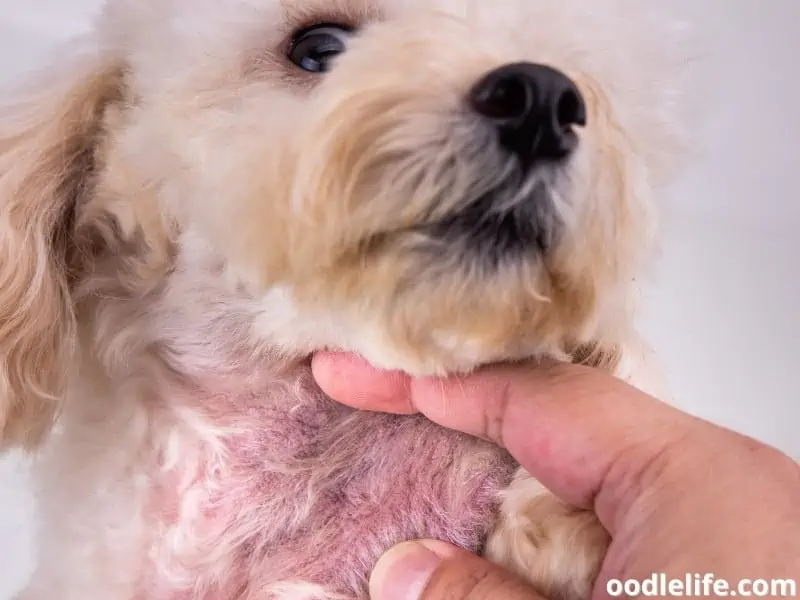
To remedy this, it’s crucial to identify the allergen and eliminate it from your dog’s life.
Parasites and Fleas
Parasites are another common culprit of hair loss in dogs. Fleas, mites, and lice can wreak havoc on your dog’s tail, causing itching, inflammation, and hair loss. In the case of flea allergy dermatitis, for example, the dog’s skin may thin along the tail due to an allergic reaction to flea bites.
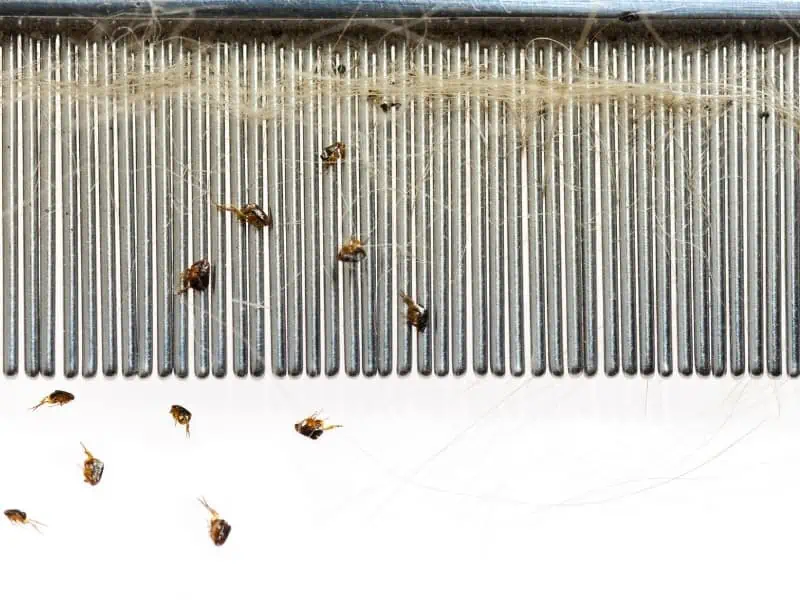
Regularly checking for and treating parasites can help prevent hair loss related to these critters.
Hormonal Imbalance
Hormonal imbalances, such as hypothyroidism, can lead to focal hair loss on a dog’s tail and other areas. When the thyroid gland doesn’t produce enough hormones for proper body functioning, it can result in a number of symptoms, including hair loss. Diagnosis and treatment of the underlying hormonal issue can help improve hair growth.
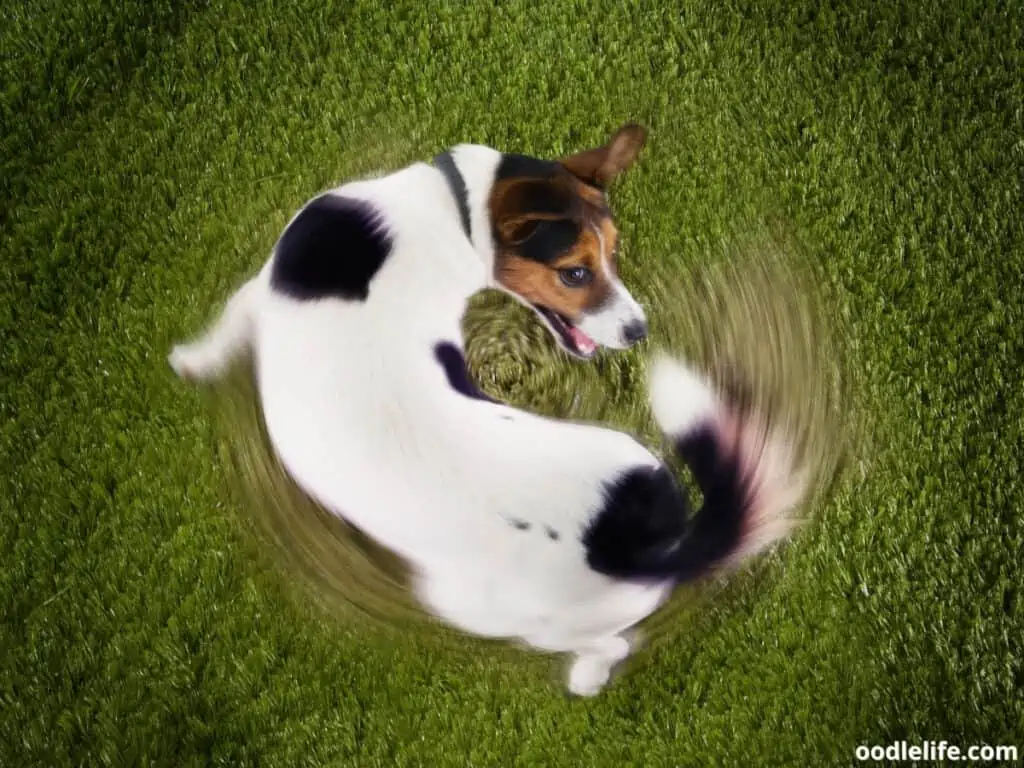
Skin Infections
Skin infections, like bacterial or fungal, can cause hair loss as the dog scratches or licks the affected areas, including the tail. Proper diagnosis and treatment with medication can help resolve the infection and restore hair growth.
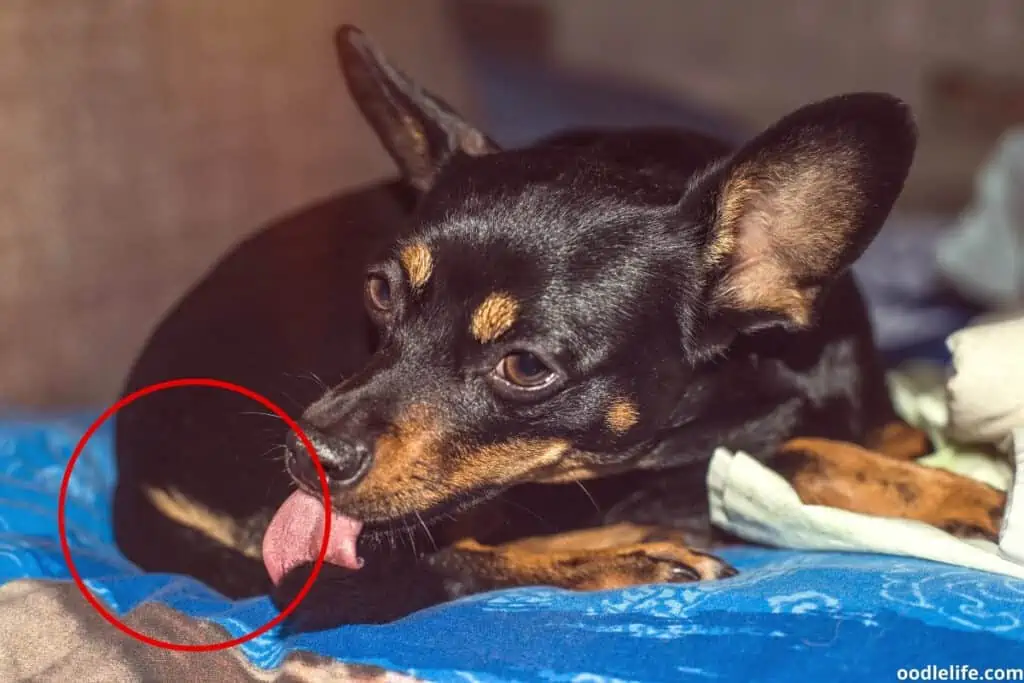
Cushing’s Disease
Cushing’s disease, a condition caused by an overproduction of cortisol in your dog’s body, can also lead to hair loss. This can appear as thinning hair on the tail or any other part of the body. If you suspect your dog has Cushing’s disease, consult your veterinarian for appropriate treatment options.
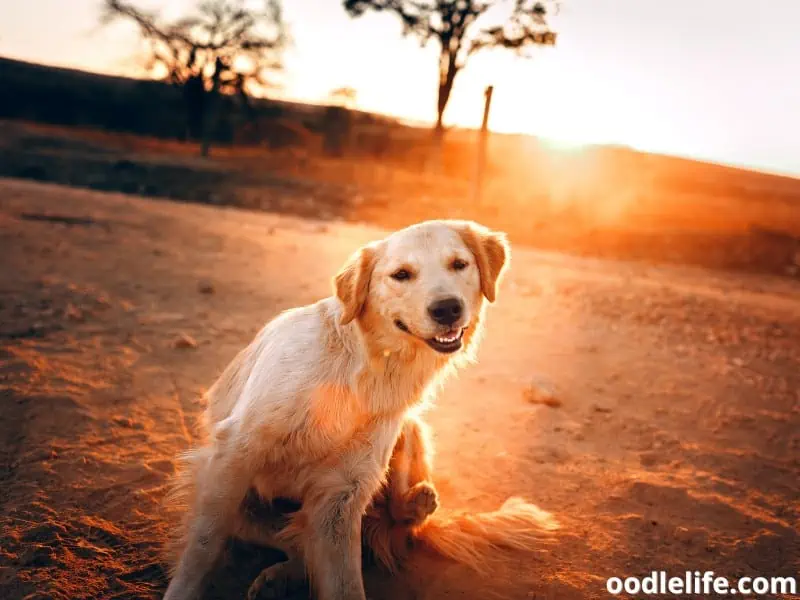
Behavioral Disorders
If your dog is suffering from a behavioral disorder like anxiety or stress, they may exhibit excessive grooming or biting at their tail, which can result in hair loss. Addressing the underlying behavioral issue with a veterinarian or professional trainer can help curb this tendency and prevent further hair damage.
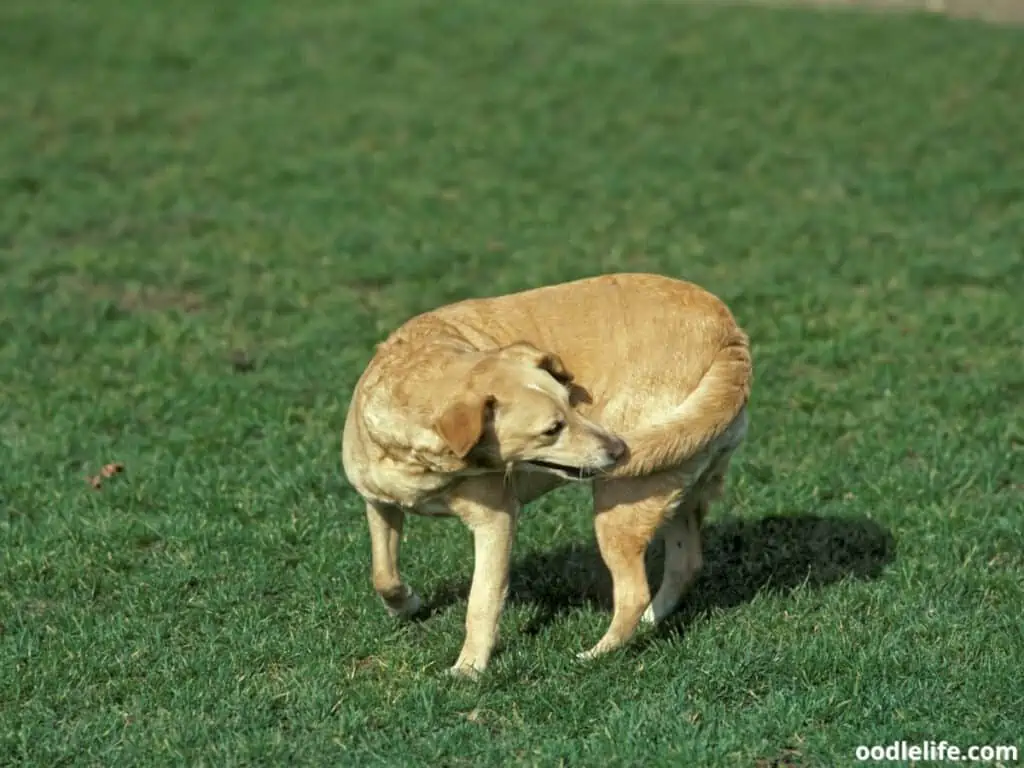
Hypothyroidism
As mentioned earlier, hypothyroidism is a hormonal issue that can lead to hair loss on a dog’s tail. This condition is more common in certain breeds and can be treated with thyroid hormone replacement therapy prescribed by a veterinarian. Regular monitoring and adjusting of your dog’s medication can help maintain normal hormone levels and prevent hair loss.

Other Causes
A variety of other factors can contribute to hair loss on a dog’s tail. Some examples include poor diet, trauma, or even cancer. In the case of Alopecia X, which affects certain dog breeds like the German Spitz, hair loss often begins at the head and progresses towards the tail.
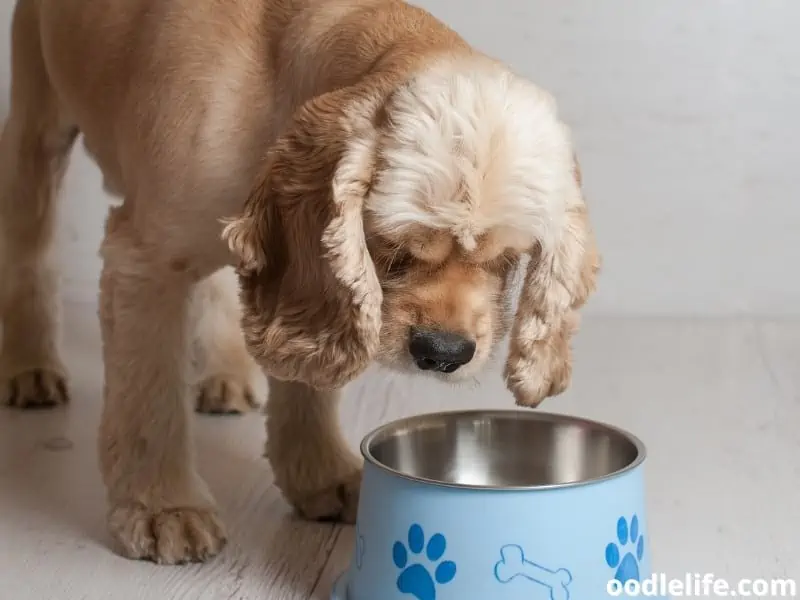
It’s essential to consult your veterinarian for proper diagnosis and treatment whenever you notice your dog losing hair to determine the underlying cause.
Symptoms and Indications
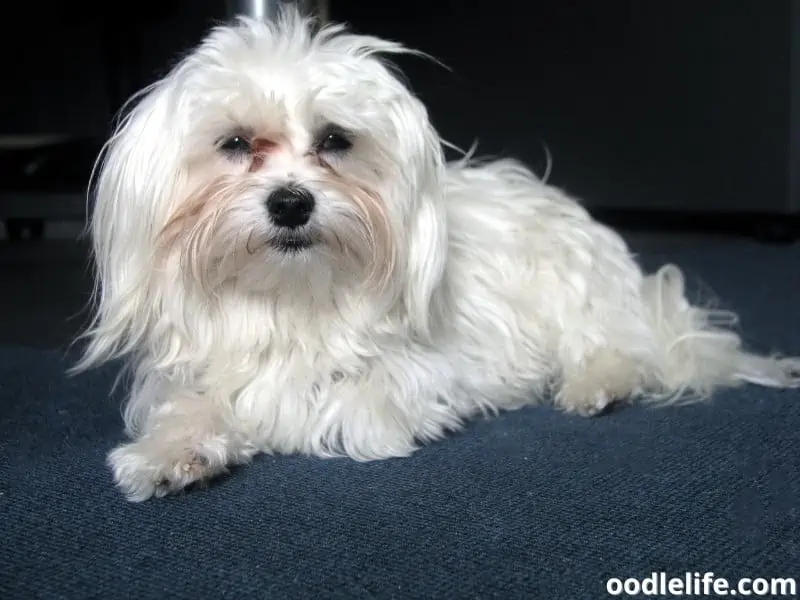
Bald Spots and Patches
If you’ve noticed your dog losing hair on his tail, it’s important to pay attention to the possible symptoms and indications. One obvious sign is the presence of bald spots and patches on the tail. These spots can appear suddenly or progress slowly over time.
If you find your furry friend’s tail looking less fluffy than usual, don’t freak out; just take note of the other symptoms present.
Itchy and Inflamed Skin
Another indication to look for is itchy and inflamed skin around the tail area. Your dog might be constantly nibbling or biting at the area, trying to get relief from the itchiness. In some cases, the skin may become red or swollen, which can make your canine companion rather uncomfortable.
So, if you happen to see your dog doing the ‘tail-chasing dance’ more often, it might not be a light-hearted play – it’s time to observe and investigate further.
Loss of Appetite
Although not as common, loss of appetite can be a sign that something is bothering your dog. Stress or discomfort caused by the hair loss and skin irritation might cause a decrease in your pup’s appetite. If you notice your dog isn’t as excited about mealtime as usual, it might be time to check in with your vet to rule out any underlying issues.
Excessive Scratching
Last but not least, excessive scratching is another telltale sign that something is amiss. While occasional scratching is entirely normal for dogs, if you see your pup vigorously scratching at his tail to the point of no return (or, you know, hair), it’s worth looking into the issue.
Keeping an eye out for these symptoms can help you determine whether your dog’s hair loss is a cause for concern and guide you on the next steps in seeking veterinary advice. Remember, in the canine world, there’s no such thing as a bad hair day – so take these signs seriously!
Identifying the Underlying Cause
When your furry friend starts losing hair on their tail, it’s natural to feel concerned. Let’s explore ways to identify the root of the problem.
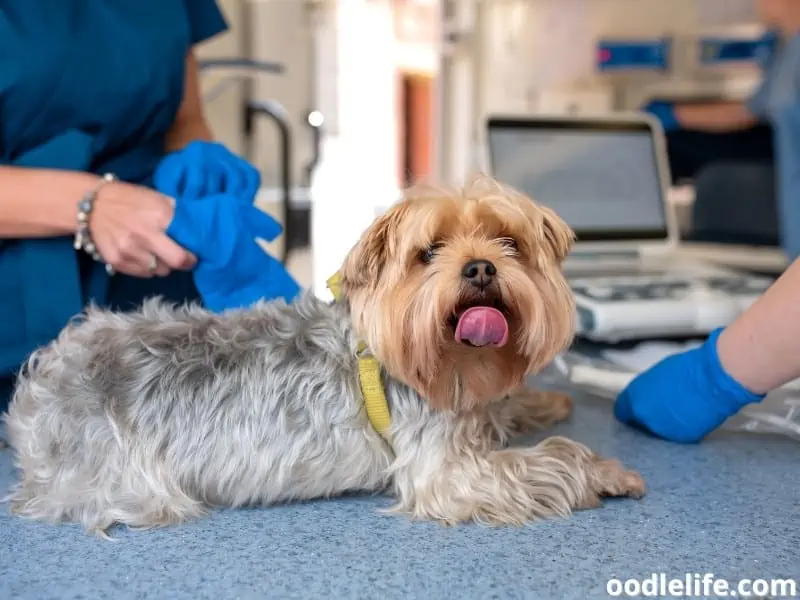
Veterinary Examination
First things first, a trip to the vet is essential. Our canine pals can’t tell us what’s wrong, and a veterinarian’s expertise is invaluable. Trust me, they’ve seen it all! Your vet will perform a thorough examination of the tail and the skin around it.
Blood Tests
Blood work is often a key factor in diagnosing underlying issues causing hair loss. Our trusty veterinarians may recommend blood tests to check for issues such as hormonal imbalances, infections, or allergies. For example, hypothyroidism is a common cause of hair loss in dogs and can be identified via a blood test.
Skin Scrapings
While the idea might make you cringe, skin scrapings can work wonders in revealing the cause behind your dog’s hair loss on their tail. This simple procedure involves gently scraping the skin’s surface to collect samples to be examined under a microscope. It can help identify mites, fungal infections, or even bacterial infections that could be causing the problem.
To sum up, identifying the cause behind your dog’s tail hair loss requires a thorough veterinary examination, blood tests, and potentially skin scrapings. With the assistance of a knowledgeable and experienced vet, you can help your four-legged friend get back to enjoying life, confident in their full and fluffy tail!
Types of Treatments
Medication
One common reason for hair loss on your dog’s tail is an underlying medical condition that may require medication. For example, if your dog has a hormonal imbalance, such as an excess of cortisol, your vet may prescribe a drug like trilostane to help regulate this. Another possible cause could be a bacterial infection, in which case antibiotics would typically be recommended.
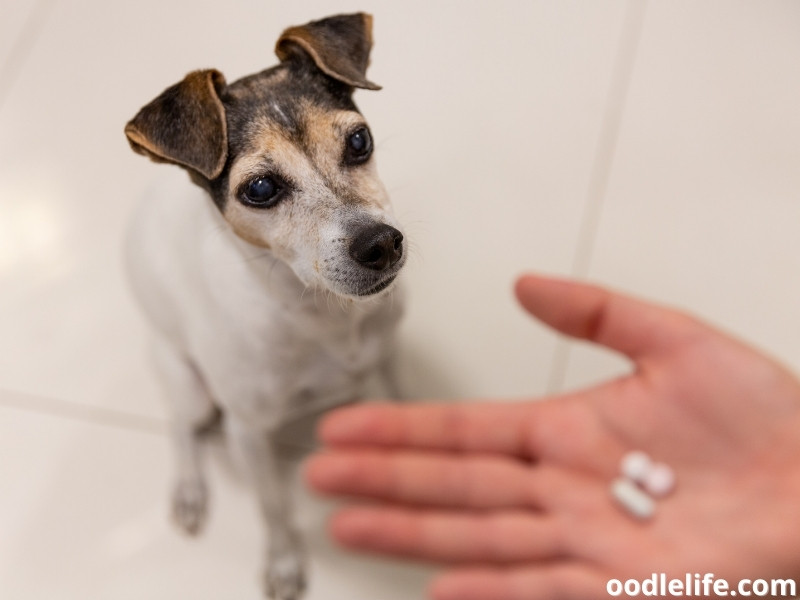
Remember, you should always consult your vet before starting any new medications for your furry friend. It’s important to ensure that the treatment is appropriate for your dog’s specific situation.
Dietary Changes
Your dog’s diet can also have an impact on their hair health. Lack of essential nutrients or food allergies could be the culprits behind hair loss on the tail. In these cases, making some dietary adjustments might be necessary.
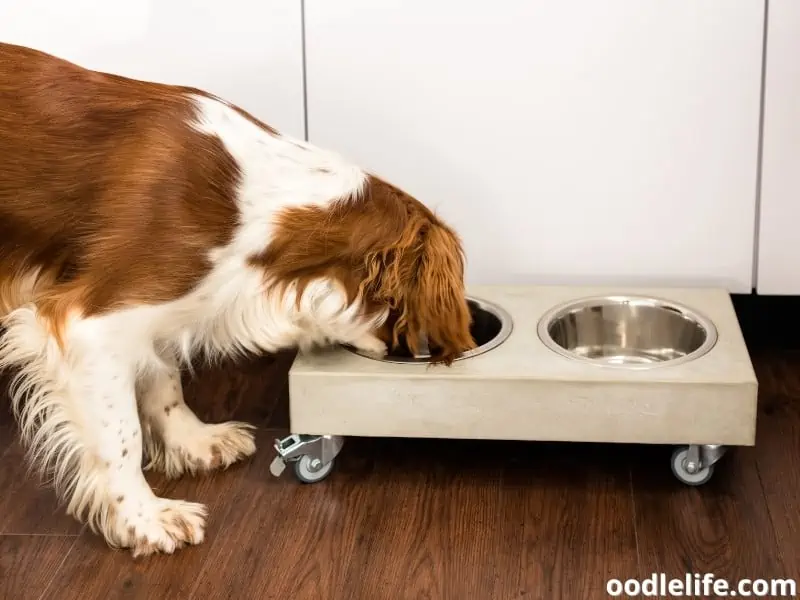
For instance, incorporating foods rich in omega-3 fatty acids, like fish oil or flaxseed, can help improve overall skin and coat health. Additionally, working with your vet to identify and eliminate any potential allergens from your dog’s diet (e.g., switching to limited-ingredient or hypoallergenic food) can be essential. A happy, healthy diet can lead to a happy, healthy tail.
Topical Solutions
For some canine tail hair loss, applying topical solutions directly to the affected area can provide relief. There are various over-the-counter and prescription creams, ointments, and shampoos that could help manage the issue. For example, medicated shampoos with anti-inflammatory or antifungal properties can be beneficial in cases where skin irritation or infection is the cause of hair loss.

However, make sure to get your vet’s input before using any new topical treatments, so you know you’re choosing the best product for your dog’s specific needs.
Preventive Measures
Taking preventive measures to maintain your dog’s overall tail health is essential. These measures can include regular grooming to reduce the risk of matting and tangles, which could lead to hair loss. Additionally, keeping your dog’s living environment clean and free of potential allergens can be helpful in avoiding skin irritations and allergies.
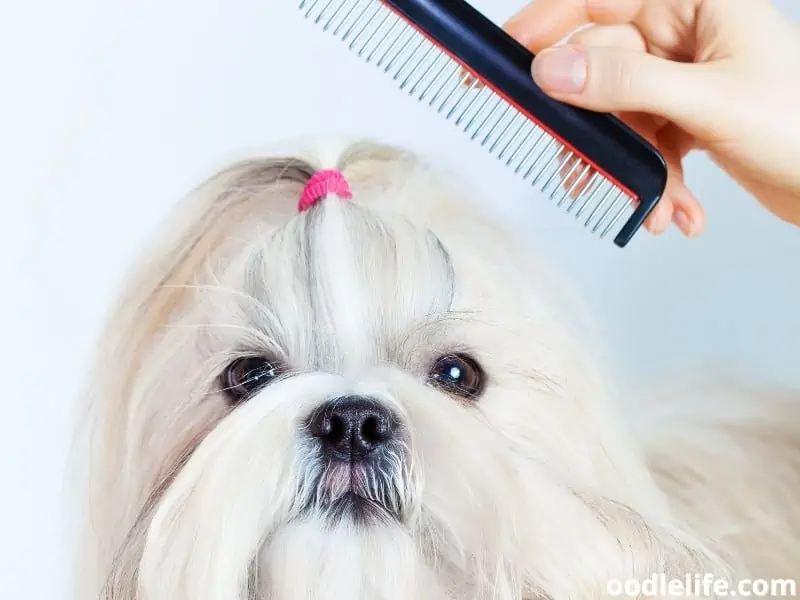
Proactively addressing any health concerns and working closely with your vet to develop a tailored care plan can help you keep your dog’s tail looking its best.
So, whether you’re dealing with hair loss on your dog’s tail due to medication, dietary changes, topical solutions, or preventive measures, always keep in mind that our four-legged friends rely on us for their care. With a bit of attention, some strategic adjustments, and a good dose of love, you’ll have their tail wagging again in no time!
Breeds More Prone to Hair Loss
Cocker Spaniels
Cocker Spaniels are known for their luscious locks, but sometimes they may experience hair loss on their tail. This can be due to a number of factors such as allergies, hormonal imbalances, or even just plain old stress. One thing is for certain, though – a Cocker Spaniel without a beautiful tail is like a pizza without cheese, and we wouldn’t want that, would we?
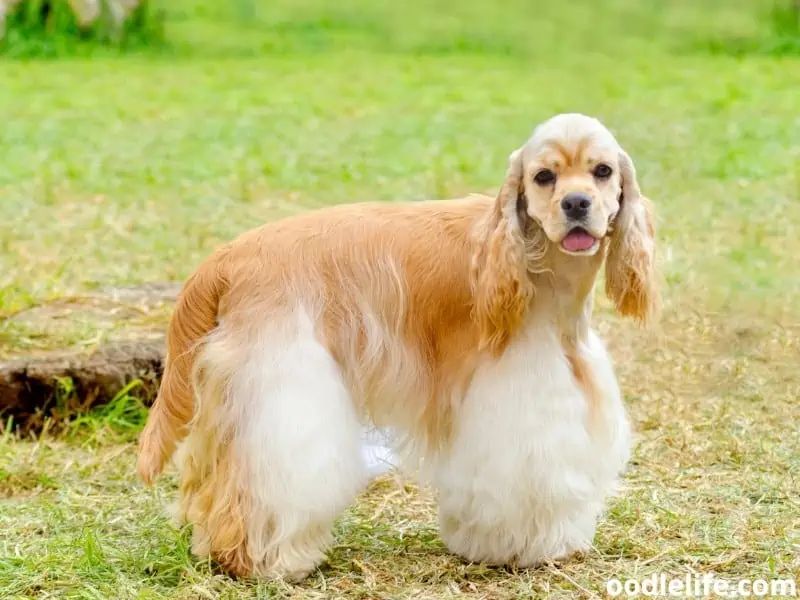
Boxers
On the other hand, Boxers might be born warriors in the ring, but they aren’t immune to hair loss either. Their short, smooth coats make it easier to spot when their tails are looking a little sparse. It’s not all doom and gloom, though – they are still just as lovable and full of energy despite their slightly balding tail.
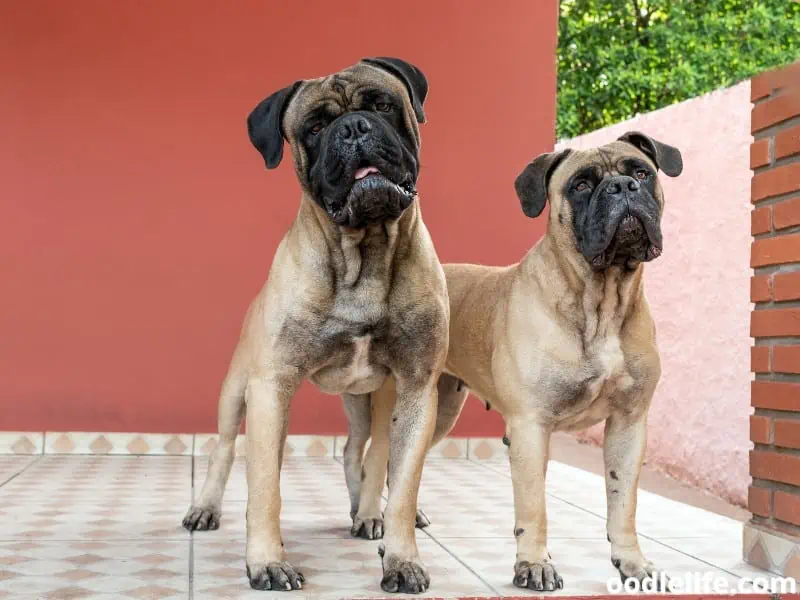
Dachshunds
Last but not least, our beloved wiener dog, the Dachshund! Known for their elongated bodies and courage, hair loss on their tails can be attributed to various factors as well. Be it allergies, poor nutrition, or infections, Dachshunds need some extra care and attention to maintain their charming looks.
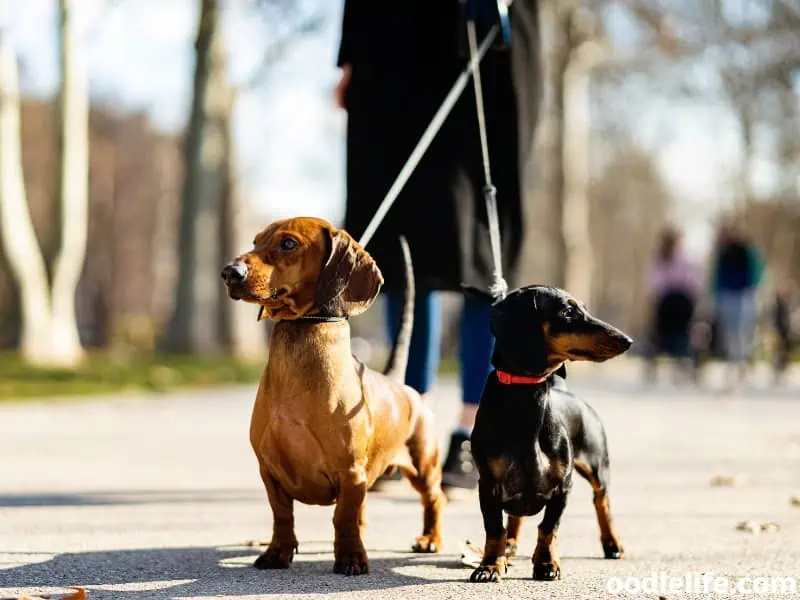
Just think of their tail as a paintbrush and don’t worry too much – it’ll still wag just as enthusiastically without all the hair.
Tips for Maintaining Healthy Dog Skin and Coat
Grooming Routine
Establishing a consistent grooming routine is vital for keeping your dog’s skin and coat healthy. Regular brushing helps remove loose hair, dirt, and dander, making your furry friend feel more comfortable, and you less likely to find clumps of hair on the furniture. Depending on the breed, you might want to trim hair around your dog’s tail, to reduce the chance of matting and discomfort.
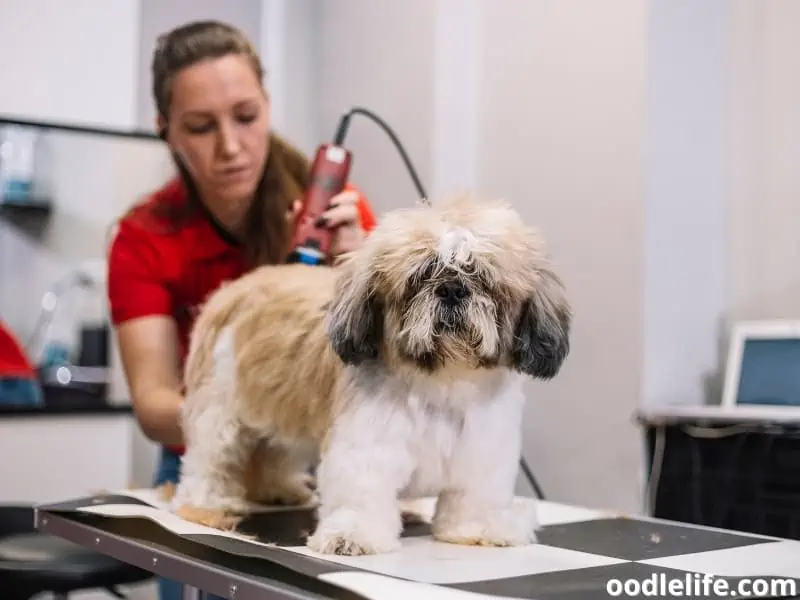
And let’s not forget – a shiny, tangle-free tail is something to wag about!
Nutrition
Dogs, like humans, are what they eat! A healthy diet is critical in preventing hair loss and maintaining a healthy skin and coat. High-quality dog food with the right balance of proteins, fats, vitamins, and minerals is essential.
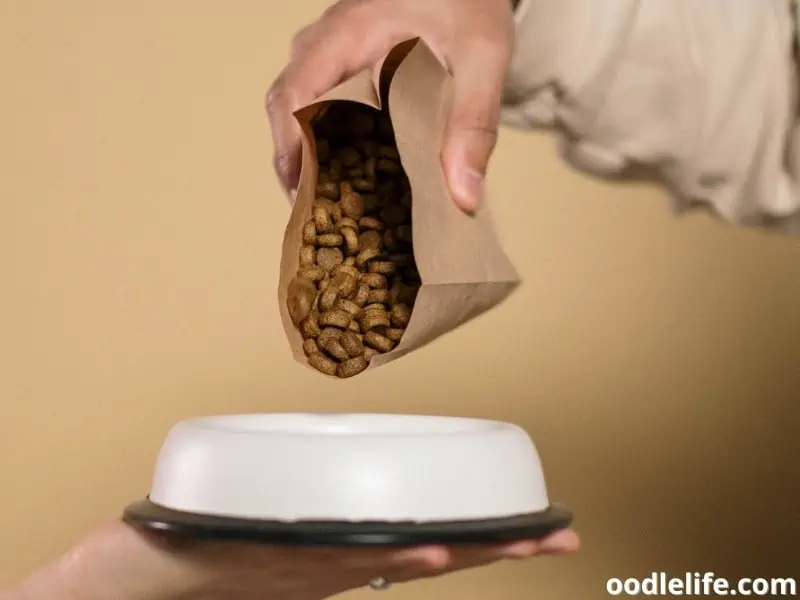
Omega-3 fatty acids, for instance, play a crucial role in skin health, and can be found in fish oil supplements or foods like salmon. Just remember not to overdo it on the table scraps – too many treats can lead to an unhealthy, unhappy pup.
Regular Vet Check-Ups
Finally, don’t forget the importance of regular check-ups with your trusted veterinarian. They’ll be able to spot early signs of potential problems, like skin infections or hormonal imbalances, which might lead to hair loss.
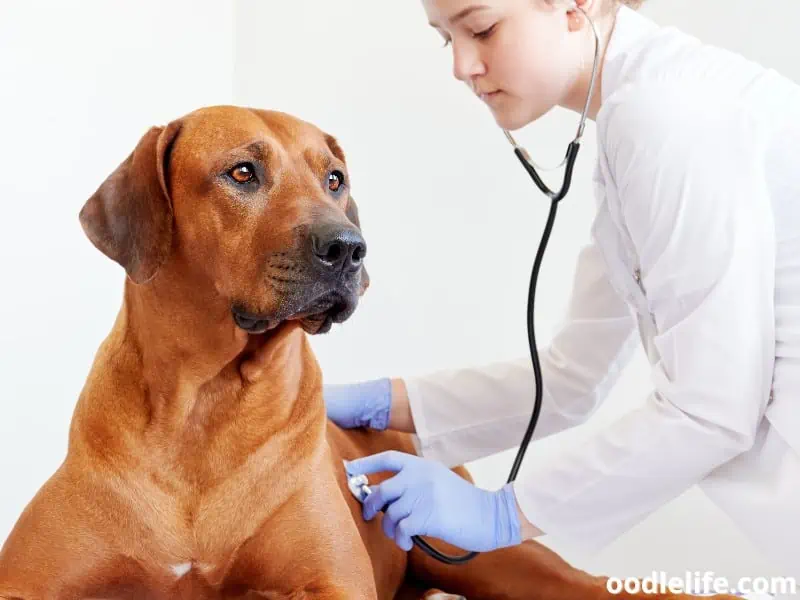
A routine visit to the vet can save a lot of worry, and with the right advice and care, your dog will be the envy of the neighborhood – for their luscious, well-groomed tail, of course!